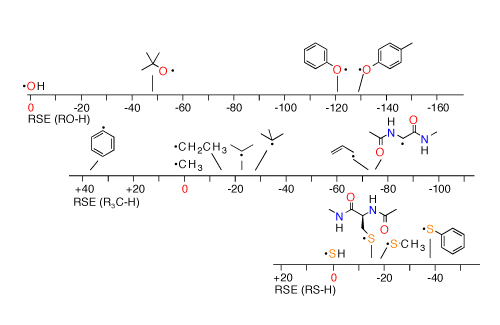Radical stability and its role in synthesis and catalysis
11-Jun-2010
Org. Biomol. Chem., 2010, 8, 3609-3617 published on 11.06.2010
Org. Biomol. Chem.
The thermodynamic stability of carbon-centered radicals may be defined in quantitative terms using the hydrogen transfer reaction shown in eqn (a). The stability values obtained in this way for substituted systems may be understood as the stabilizing or destabilizing influence of substituents on the neighboring radical center. This approach can be easily adapted to oxygen- or sulfur-centered radicals as expressed in eqn (b). The stability values obtained in this way do not only serve as a quantitative basis for the discussion of substituent effects, but also allow for quantitative estimates of reaction energies for hydrogen transfer reactions. These occur as key steps in a multitude of synthetically useful radical-chain processes in apolar solution, in enzyme-mediated non-chain processes in biological systems, and in the oxidative degradation of a variety of biomolecules. The review will highlight the usefulness of radical stability values for the rationalization of successful (and not so successful) synthetic radical reactions as well as the potential design of new radical reactions.



